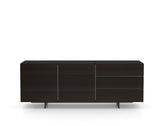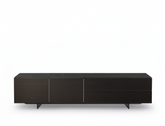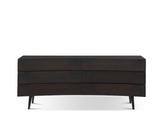The Evolution of Furniture Design: A Historic Journey
Frequently Asked Questions
1. What is the historical significance of furniture design?
2. How did furniture evolve during the Renaissance?
3. What impact did the Industrial Revolution have on furniture design?
4. How does modern furniture design incorporate technology?
5. What role does sustainability play in contemporary furniture design?
Furniture design traces a compelling path through history, reflecting shifts in culture, technology, and individual needs. From the humble beginnings of utilitarian objects to the sleek, modern pieces of today, the evolution of furniture has been characterised by innovation and creativity. One particularly iconic piece that has withstood the test of time is the tv console. This essential item not only showcases the evolution of design but also provides insight into how our lifestyles have changed over time.
The Early Days: Functional Beginnings
In ancient times, furniture was primarily functional. It comprised rudimentary structures made from natural materials such as wood, stone, and animal hides. The concept of personal space was virtually non-existent; furniture was often communal. Early Egyptians, for example, used a variety of practical items including stools and tables, while the Romans developed more elaborate designs, introducing the concept of comfort alongside functionality.
The Renaissance: A Period of Opulence
The Renaissance marked a turning point in furniture design. As society flourished, so did the artistry involved in creating furniture. Intricately carved wooden pieces adorned the homes of the wealthy, showcasing not just utility but also beauty. This era was significant for introducing ornate styles, including the classic tv console designs that mirrored the grandeur of the era. Carved wooden tv consoles started integrating into homes, becoming focal points in living areas and symbolising prosperity.
Baroque to Rococo: Manifestations of Style
As furniture design evolved through the Baroque and Rococo styles, the focus moved towards extravagance and elaborate details. The Baroque period introduced bold forms and rich, dark woods, while the Rococo style emerged with a light, playful essence characterised by curves, pastel colours, and asymmetrical shapes. This blend of styles led to the creation of luxurious furniture pieces, including the extravagant tv console. These items were embellished with intricate carvings and gold accents, serving as functional yet remarkable displays in homes.
The Industrial Revolution: Democratizing Design
The Industrial Revolution had a monumental impact on furniture design, leading to mass production and a shift in accessibility. Furniture became more affordable, allowing a broader segment of society to purchase stylish items for their homes. While earlier designs relied heavily on artisan craftsmanship, factories began producing furniture in standard sizes and styles. This revolution also gave birth to iconic pieces, including the now-popular tv console, which moved from being an exclusive item for the elite to a staple for every household.
The Modern Era: Minimalism and Functionality
As we ventured into the 20th century, the world saw the rise of Modernism. This movement embraced simplicity, functionality, and clean lines, which greatly influenced furniture design. Designers like Charles and Ray Eames, along with Alvar Aalto, pushed the boundaries of form and material, creating pieces that were not just aesthetically pleasing but also functional.
The tv console embodies this ethos remarkably well. In a world where technology began to dominate living spaces, designers crafted consoles that not only served as storage units but also enhanced the overall aesthetics of a room. The modern tv console balances minimalism with functionality, offering clean lines and organisation, complementing today’s tech-filled environments.
The Rise of Smart Furniture
In recent years, the advent of technology has further transformed furniture design. With the rise of smart furniture, the integration of technology into design has become a focal point. Modern tv consoles now come equipped with features such as built-in cable management systems, LED lighting, and wireless charging stations. These innovations reflect a growing trend towards multifunctional furniture that caters to the conveniences of modern life.
Sustainability: The Future of Furniture Design
As we move forward, sustainability in furniture design has become a primary concern. Modern consumers are more conscious than ever of the environmental implications of their purchases. Eco-friendly materials, sustainable manufacturing processes, and design philosophies that prioritise recycling or upcycling are now at the forefront of many brands’ practices.
Today’s tv consoles often incorporate sustainable materials and process, ensuring that while they enhance living spaces, they also contribute positively to the environment. Designers are exploring innovative methods to use reclaimed wood, recycled plastics, and other sustainable materials to create stylish and functional furniture that appeals to the eco-conscious consumer.
The Role of Customisation and Personal Expression
With the rise of personalisation in purchasing patterns, consumers are increasingly interested in bespoke furniture options. Customised designs empower individuals to express their style while ensuring that their furniture fits perfectly within their unique living spaces. Many contemporary brands are now offering bespoke tv consoles, allowing customers to choose materials, sizes, and finishes that align with their aesthetic preferences and practical needs.
Blending Old and New: Eclectic Styles
In the present day, there has been a marked trend towards eclectic styles that blend traditional elements with contemporary design. Designers draw inspiration from various historical epochs, creating pieces that merge the elegance of past eras with modern sensibilities. The tv console has become a canvas for this eclectic approach, with designs ranging from vintage-inspired to ultra-modern.
The Role of Technology in Design Choices
Technology is no longer merely an addition; it has become a central aspect of furniture design. As we integrate advanced technology into our homes, it is crucial for modern furnishings, like the tv console, to adapt. Companies are now exploring the integration of augmented reality (AR) and virtual reality (VR) to enable customers to visualise furniture in their spaces before making a purchase. These technological advances not only enhance the buying experience but also bridge the gap between the traditional and contemporary design landscapes.
Global Influences: A Fusion of Cultures
As the world becomes increasingly interconnected, international influences play a substantial role in furniture design. Cross-cultural exchanges have resulted in a fusion of styles that enrich the contemporary design landscape. For instance, Scandinavian minimalism has influenced many aspects of modern design, including the simplicity and elegance of tv consoles prevalent across various markets.
Asian influences, such as Japanese minimalism and Indian craftsmanship, also inspire designers. These global elements contribute to a rich tapestry of choices available for consumers looking to infuse international elegance into their homes through furniture design.
Your Journey in Furniture Design
The evolution of furniture design, particularly regarding pieces like the tv console, highlights how our environment and cultural influences shape our lives. As we reflect upon this historical journey, we recognise that furniture is not just about function; it embodies our tastes, lifestyles, and values.
Finding the Right Fit for Your Home
As you explore your options for transforming your living space, consider how your furniture choices can reflect your personality and values. Whether opting for modern minimalism, embracing sustainable materials, or selecting bespoke designs, remember that each piece should resonate with who you are.
Crafting Your Legacy: Personalising Furniture Design
The journey of furniture design is one of continual evolution, much like our understanding of living spaces. Whether you’re ruminating on the past influences or looking to the future innovations in furniture design, each choice you make contributes to a lasting legacy. Embrace the opportunity to customise your environment and let your tv console stand out as a testament to your style, principles, and love for design.
Explore the endless possibilities of furniture design today and discover the perfect pieces that will not only enhance your home’s aesthetic but also tell your unique story. Let your journey in crafting a stylish, functional, and inviting space blossom as you embrace the evolution of furniture design!







